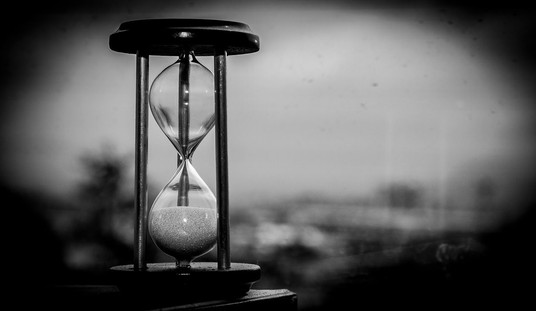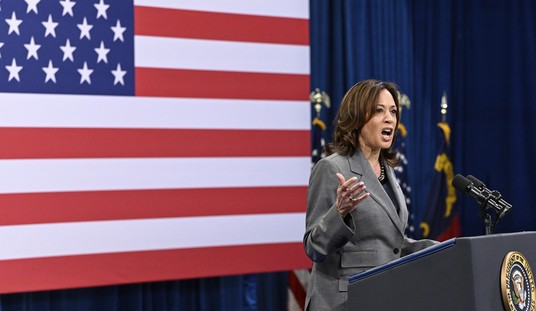We do have a problem with teens, guns, and social media, but it’s not the issue that gun control activists from the White House on down are raising with the help of USA Today and reporter Nick Penzenstadler; “gun influencers” under the age of 18 who’ve acquired a significant fan base online.
According to the anti-gunners, “kidfluencers” like 11-year-old Autumn Fry or families like the Thrashers (who run the “Survival Sisters” vlog) are willing dupes or pawns of the firearms industry who are trying to get minors hooked on guns. Autumn Fry can’t just be a kid who enjoys the shooting sports with her parents. No, she has to be turned into the gun industry equivalent of Spuds Mackenzie; a marketing tool used by savvy companies to reel in the next generation of gun owners.
“Marketing guns to children is abhorrent, including the shameful practice of gun manufacturers using social media to encourage children to purchase deadly weapons,” White House spokesman Jeremy M. Edwards told USA TODAY. “This is especially alarming when we know that guns are the No. 1 killer of kids.”
Most states have age minimums to buy or possess firearms – either 18 or 21 – but almost all offer exceptions for hunting and shooting with parental supervision.
President Joe Biden signed an executive order in March encouraging the independent Federal Trade Commission to study gun marketing tactics aimed at minors. The agency has not done so and when pressed about progress, FTC spokesman Douglas Farrar declined to comment.
No company is using social media to “encourage children to purchase deadly weapons,” despite the claims of the gun control advocates working in the White House. For starters, you have to be 18 to purchase a firearm. But “marketing to parents” or “highlighting responsible firearm use” doesn’t sound nearly as scary as “marketing to kids”, so the prohibitionists are insistent that any involvement of minors in the shooting sports, whether it’s filmed for social media or not, is just a cynical ploy by gun makers to target an audience too young to purchase their products.
Penzenstadler does give gun owners a little space for a rebuttal, but only after extensively quoting gun control groups and individual activists. Fred Thrasher, who runs the Survival Sisters channel featuring his four daughters, told USA Today that the channel doesn’t cater to kids at all. The primary audience is parents and grandparents between the ages of 35 and 65, and Thrasher says he’s advocating for safe and responsible gun use.
“No one wants to market guns to children; they’re not influencers, they’re just living their life,” Thrasher said. “This is our time together instead of screen time. We promote family and skills and critical thinking, but they’re not obsessed with guns.”
Thrasher noted that unlike rap videos, none of his content promotes crime or glamorized firearms. He says it’s an added challenge to be a family of Black shooters, and women, in an industry dominated by white men.
As I said, there is a problem with teens, guns, and social media, but this isn’t it. So why are gun control activists so intent on shutting down these depictions of safe and responsible gun handling under adult supervision rather than criticizing social media platforms like Snapchat and irresponsible or inattentive parents who turn a blind eye to kids posting videos where they’re threatening violence with illicitly-obtained firearms?
Juan Campos has been working to save at-risk teens from gun violence for 16 years.
As a street outreach worker in Oakland, he has seen the pull and power of gangs. And he offers teens support when they’ve emerged from the juvenile justice system, advocates for them in school, and, if needed, helps them find housing, mental health services, and treatment for substance abuse.
But, he said, he never has confronted a force as formidable as social media, as small boasts and disputes online can escalate into deadly violence in schoolyards and on street corners.
Teens post photos or videos of themselves with guns and stacks of cash, sometimes calling out rivals, on Facebook, Instagram, Snapchat or TikTok. When messages go viral, fueled by “likes” and comments, the danger is hard to contain, Campos said.
“It’s hundreds of people on social media, versus just one or two people trying to guide youth in a positive way,” he said. Sometimes his warnings are stark, telling kids, “I want to keep you alive.” But, he said, “it doesn’t work all the time.”
Shamari Martin Jr. was an outgoing 14-year-old and respectful to his teachers in Oakland. Mixed in with videos of smiling friends on his Instagram feed were images of Shamari casually waving a gun or with cash fanned across his face. In March 2022, he was shot when the car he was in took a hail of bullets. His body was left on the street, and emergency medical workers pronounced him dead at the scene.
In Shamari’s neighborhood, kids join gangs when they’re as young as 9 or 10, sometimes carrying guns to elementary school, said Tonyia “Nina” Carter, a violence interrupter who knew Shamari and works with Youth Alive, which tries to prevent violence. Shamari “was somewhat affiliated with that culture” of gangs and guns, Carter said.
Maybe gun control activists don’t want to admit the failures of their gun control laws in states like California, or maybe they simply view videos that promote safe and responsible gun use as a bigger threat to their agenda than videos featuring tween gangbangers and juvenile criminals illicitly using illegally-obtained firearms. Whatever their warped rationale, activists like Rachael Albers are still aiming their ire at lawful gun owners and parents who teach the next generation about the importance of the Second Amendment as well as safe and responsible gun use.
Albers said some of the kidfluencers may not have paid brand contracts now, but are basically unpaid interns laying groundwork for future paying gigs. She blamed the NRA and manufacturers for cultivating a gun culture aimed at a younger and younger audience.
She thinks restrictions on this type of gun marketing should be the least controversial of gun control reforms.
“I have a bias, but I think most people can agree we shouldn’t be marketing guns to kids,” she said. “I’ll relent on your rights argument, you have a right to take your kid to a range, but we don’t market alcohol or cigarettes to kids anymore.”
Albers cited a variety of options: states could enact stricter marketing rules, social media companies could crack down and the FTC could put better rules in place – and enforce them.
She’ll “relent” on the rights argument? How big of her. Here’s the thing, though. Not only do I and other parents have the right to take our kids to the range, we have the First Amendment right to record that footage and post it online for all the world to see. That’s not marketing guns to kids. If anything it’s marketing safe and responsible gun handling to an audience that’s mostly comprised of adults. That shouldn’t be controversial at all, but for the gun prohibitionists anything that normalizes gun ownership is objectionable, and if it has the slightest possibility of encouraging the next generation to become Second Amendment supporters instead of gun control activists they’re going to do everything they can to shut it down.









Join the conversation as a VIP Member